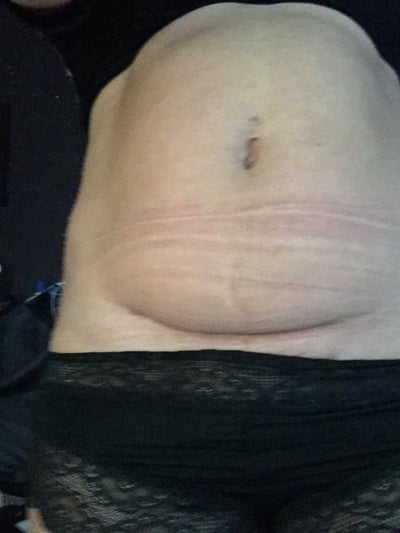Although this almost never occurs. 9. Are there any risks or side effects with using silicone strips? Because the strips are being applied to the skin, there is always a risk of it having a reaction, causing a rash. Can I use a cream under the silicone pads? 10. Can the silicone strips be used in combination with any other product?
Most advise that you to take them off when you shower of bathe, and then reapply them as needed. Some come with adhesive to apply others, are self-adhesive or just dissolve after a few days of bathing. Honestly some we’ve seen are so unique and pretty, I wouldn’t be surprised if people without tummy tuck scars chose to wear them with their favorite bikini (or without).
Hypertrophic - These types of scars typically are thickened raised red scars on the skin that do not extend beyond the boundary of the incision or injury area. Keloid (Keloidal) - These types of scars are elevated and protrude from the skin and extend beyond the boundaries of the original incision or injury.
However, if the surgeon makes the incision as a half circle above the belly button, it will heal as an “inverted U” and duplicate the look of a natural belly button. When a patient is standing up, the skin on the top of the belly button looks like an inverted U as it hangs slightly over the hole in the belly button that is attached to the abdominal wall.
An abdominoplasty surgery does carry certain health risks. These include an adverse reaction to the anesthetic used, the possibility of blood clotting, the surgical site could become infected, and in rare cases patients may develop keloids. For this reason it is very important that you choose a skilled and experienced surgeon when looking into this type of operation.
During the first week you are likely to experience quite a bit of pain so you will need to take painkillers that your doctor will prescribe. You will have to make sure you do not lift anything heavy during this time, as there will also be a lot of bruising.
You should not apply a cream under the silicone sheets because this interferes with its action and may cause irritation. Overall, the silicone strips have many benefits in diminishing tummy tuck scars. The benefits are not only aesthetic, but also in terms of comfort, since they also relieve itching and burning associated with the incision site. Silicone strips are an excellent choice for the reduction and improved appearance of tummy tuck scars. Actually, they are your best bet on improving your scar and preventing it from developing excess scar tissue growth such as keloids.
Many people are not even aware that an abdominoplasty also requires a small incision at the belly button. When you wear a two piece bathing suit after your procedure, the scar around the belly button can be a clear giveaway of a tummy tuck. The best scar for the belly button is an “inverted U” because it duplicates the look of a real belly button. A scar that leaves the belly button with a round shape usually looks unnatural.

